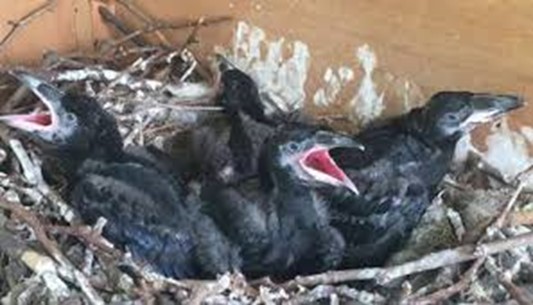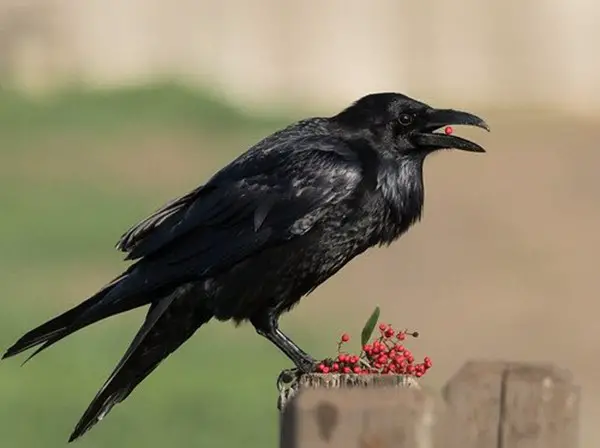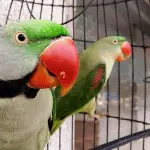A lot of pet owners love taking care of different types of bird species. In some cases, ravens and other corvids are also on the list of different owners who prefer to take care of all kinds of pet birds. Ravens have their own unique traits that make them spectacular pets to have to depend on how you view them and on how you take care of them. After all, ravens are known to be quite intelligent and noble birds that have found their way in mythology and different stories throughout history.
As great as it is to have a pet raven, taking care of a chick isn’t the easiest task to do. Ravens may be good and quite independent as adults, but, as babies, they can be very difficult for pet owners to take care of because of the very fact that they cannot do anything by themselves as chicks. Baby ravens are born naked and are yet to open their eyes. They depend on their mothers to give them the warmth and care they need when they are still chicks. Of course, it is also the job of the mother raven to rear her chicks and feed them while they are still unable to eat by themselves.
All that considered, bird owners who purchase ravens as chicks often need to act as their substitute mother. There is a need for them to hand-rear the chicks themselves if they want them to survive their childhood. Hand-rearing is not something that is totally easy to do. But if you follow our guide, you will be acting like the raven chick’s mother with no difficulties whatsoever.
Things to know about ravens as pets
Ravens are wild
Ravens are wild birds. They are similar to any other corvids in the sense that it will be pretty difficult or even impossible to tame them and make them act like your usual household pet bird. That means that you should not expect them to have the same kind of personality as your parrots. Moreover, this is the very same reason why many of those who reared raven chicks eventually return the birds to the wild where they belong. They simply do not sit as well as domesticated pet birds when they are under captive care.
Can live for more than 20 years and are social birds
Some ravens have been reported to be able to live for more than 20 years or even up to 30 years. On top of that, they are very social birds that prefer to interact with their kind instead of living under isolated conditions. They do not live well alone and will often try to make calling noises to attract other ravens. Those two factors combined mean that it will be a very heavy responsibility to take care of ravens as adults after rearing them as chicks.
Ravens bite
Even if you were the one who reared a raven chick, adult ravens could still bite you. Moreover, these birds have really strong bites that can even crush smaller bones found in your fingers. That said, they can be pretty aggressive. However, those you reared as chicks will be less aggressive than adults that were caught directly from the wild.
These birds are pretty noisy
It is perfectly normal for pet birds to be noisy. Parrots like to mimic sounds and repeat them as they will. Other types of birds sing tunes that are actually very appealing to the ears. However, ravens squeak and make noises that are not as fun as the sounds parrots mimic or the tunes that canaries sing. Instead, the sounds that ravens make are pretty noisy and annoying to the ears. Ravens do make sounds that sound a lot better compared to crows, but these sounds are so loud that you can hear them from a room away. They also make these sounds to attract other ravens. That means that you can expect other nearby wild ravens to come flocking to your house if they hear your pet calling them.
Ravens are active
While ravens are not large birds, you would have to keep these pets in large cages. That is because they are very active, and they like to jump from one spot to another. The reason for this behavior is the territorial instincts of the raven. They prefer to reign well over their territory by moving from one spot to another to make sure that no other raven takes over it. All that considered, you have to keep these birds in large cages. Moreover, keeping them indoors should be out of the question if you want your ravens to live well and active.
They are very intelligent
Ravens are some of the most intelligent birds. It is said that they are so intelligent that they can even recognize themselves when they see their reflections in mirrors or bodies of water. Ravens are also experts at crafting primitive tools from wood. On top of that, ravens have really large brains relative to their body mass. Studies show that their brain to body mass ratio is only slightly smaller than the average human’s. This allows the raven to perform complex tasks, do simple and basic calculations, and to understand its environment better than most animals or even other birds. In that sense, they are too intelligent for the average pet owner to take care of but can actually be good companions when raised well.
How to hand-rear raven chicks

Now that you know more about the raven as a pet, it is now time for you to get to know how to hand-rear them as chicks in case you rescued some or if you purchased baby ravens. Here are some tips you need to know if you want to hand-rear these birds the right way:
Raven chicks need warmth
Before anything else, the one thing you should first know is that raven chicks need warmth. They are born almost completely naked and have very poor thermoregulation. You need to provide them with an external heat source during the first 7 to 10 days after they hatch. After that, you will begin to notice how their feathers develop at a rapid pace.
Feed them with soft food
Raven chicks are almost completely dependent on their mother for food. On top of that, they were not made to be able to handle the usual food that adult ravens eat. In that case, hand-feed them yourself and make sure that you give them soft and easily digestible food. Caterpillars and scrambled eggs are good examples. As they get older in about a week or so, you may be able to feed them table scraps, small insects, fruit, and even bird pellets. Their diet should be composed of 50% protein. However, make sure that you moisten their meals before giving them to the chicks so that they will be able to digest them better.
Feed them frequently
When hand-rearing raven chicks, the key here is to feed them frequently with smaller meals. They like begging for food and should be fed whenever they start begging. Feed them once every 30 minutes but make sure that the meals are small yet large enough to make them feel full. Feeding should start around sunrise until about 10 in the evening.
Mimic a parent raven
Try to mimic how a mother raven feeds its chicks as much as possible to make feedings more natural for these babies. Mimic a parent’s call to make the chicks gape their mouths wide open. They will associate this sound with feeding and will easily respond to this later on. After that, place the food inside their mouths yourself once they start gaping. Use a tongue depressor and gently place the food inside the chick’s mouth while avoiding the entrance to its trachea. You can also use forceps that are blunt at the tip for easy and safe feeding.


